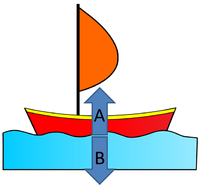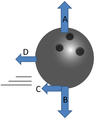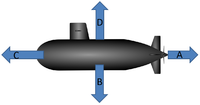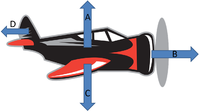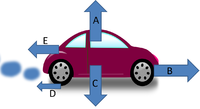Difference between revisions of "Force"
(→Representing Forces) |
(→Representing Forces) |
||
| Line 41: | Line 41: | ||
|- | |- | ||
|[[File:BoatForces.png|center|200px]] | |[[File:BoatForces.png|center|200px]] | ||
| − | |[[File:TennisBallForces.png|center| | + | |[[File:TennisBallForces.png|center|50px]] |
| − | |[[File:BowlingBallForces.png|center| | + | |[[File:BowlingBallForces.png|center|100px]] |
|- | |- | ||
| style="height:20px; width:200px; text-align:center;" |Text | | style="height:20px; width:200px; text-align:center;" |Text | ||
Revision as of 11:23, 13 October 2018
Contents
Key Stage 2
Meaning
A force is something which can make an object; speed up, slow down or change shape.
- Noun: Force
About Forces
- A force can make an object speed up. When you let go of a pencil it will fall because a force called weight is making it speed up.
- A force can make an object slow down. When you roll a ball on the carpet it will slow down and stop because a force called friction has slowed it down.
- A force can change the shape of an object. When you tip a spoon of honey the honey will change shape and stretch because a force called weight pulls it into a long shape before dripping.
Key Stage 3
Meaning
A force is an influence that can change the speed, direction or shape of an object.
About Forces
- Forces can be split into two groups, Contact Forces and Non-contact Forces.
| Contact Forces | Non-contact Forces |
- Forces can cause an object to accelerate.
- A pair of opposing forces can twist, stretch or squash an object. This is known as deformation.
Representing Forces
- Forces can be represented in a diagram with arrows that show the magnitude and direction of the force. A bigger arrow means a bigger force.
| Text | Text | Text |
| Text | Text | Text |
